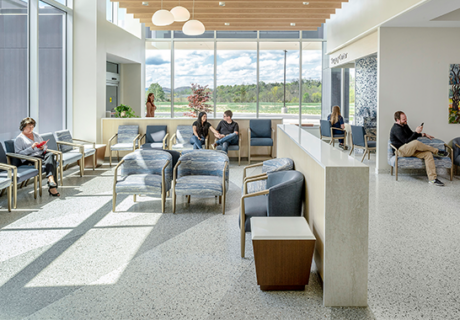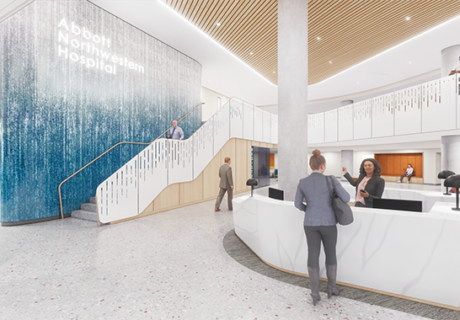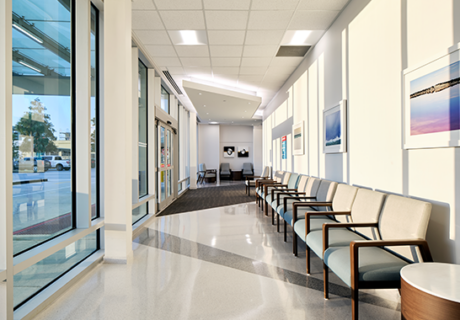PHOTO TOUR: Mercer Ambulatory Clinic
As part of its long-term vision, Mercer University School of Medicine had been seeking a medical home model for Mercer Medicine to answer a growing need for community health services in central Georgia. To that end, in fall 2012, it engaged McMillan Pazdan Smith Architecture to renovate the former home of the Georgia Music Hall of Fame into its new multispecialty ambulatory clinic.
The newly renovated 43,000-square-foot building consolidates many of Mercer Medicine’s practices into one location. The consolidation provides better access and continuity of care for patients and a new learning environment for Mercer’s medical students. Students help with rounds with more than 25 practicing physicians. The program includes advanced primary care, laboratory services, diagnostic imaging, a pulmonary function testing laboratory, and a nuclear cardiac stress testing laboratory. The building also includes a rheumatology infusion center.
The renovation of such a unique structure presented the ownership and design team with both challenges and opportunities. While the existing museum spaces had been designed for slowing down the patron experience, modern healthcare planning prioritizes flow and efficiency. Patient access to and within the building were important considerations that required special design features, including a new covered canopy, wheelchair accessibility and storage, and a personalized wayfinding strategy.
The new covered canopy provides protection to visitors as well as a clear path to the entry of the building. The renovation allowed the existing multistory entry atrium to remain an architectural focal point, while becoming a functional lobby and gateway to the rest of the facility. After passing through reception, patients are guided by Mercer staff to one of the centralized waiting spaces shared among the practice groups.
The design team was able to create efficient exam suites within the interior of the building, but the rooms on the exterior walls followed the irregular footprint, which created some challenges. However, many of the exterior exam rooms have floor-to-ceiling windows, providing plenty of natural light. Each exam room has a small, seated consultation area that allows healthcare professionals to engage patients on the same level.




